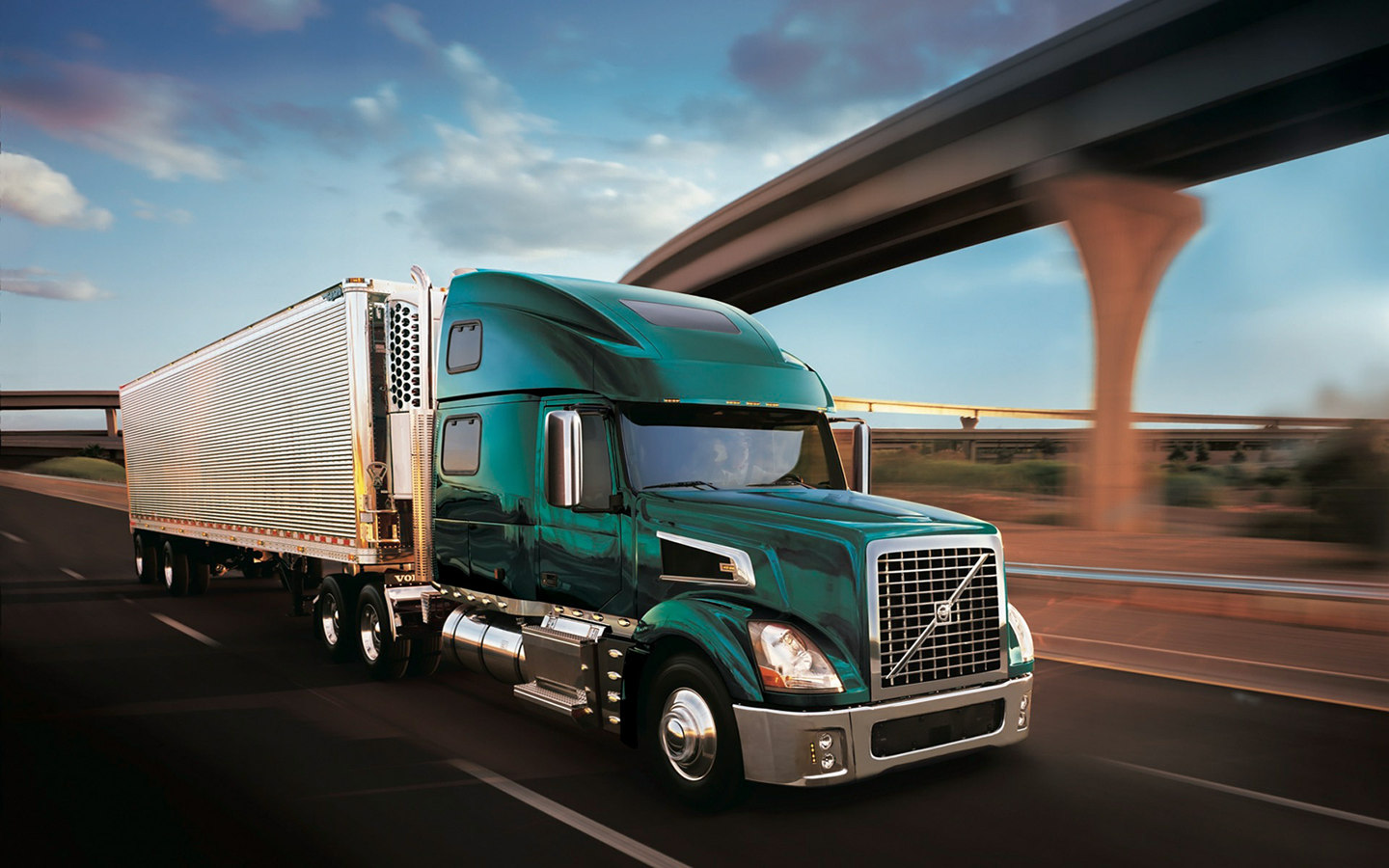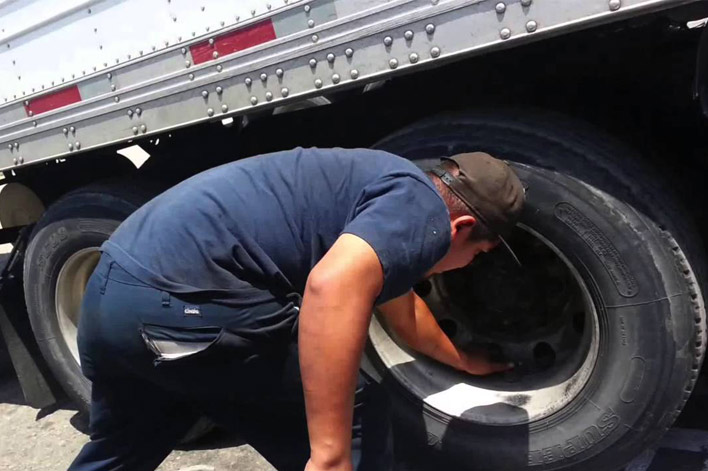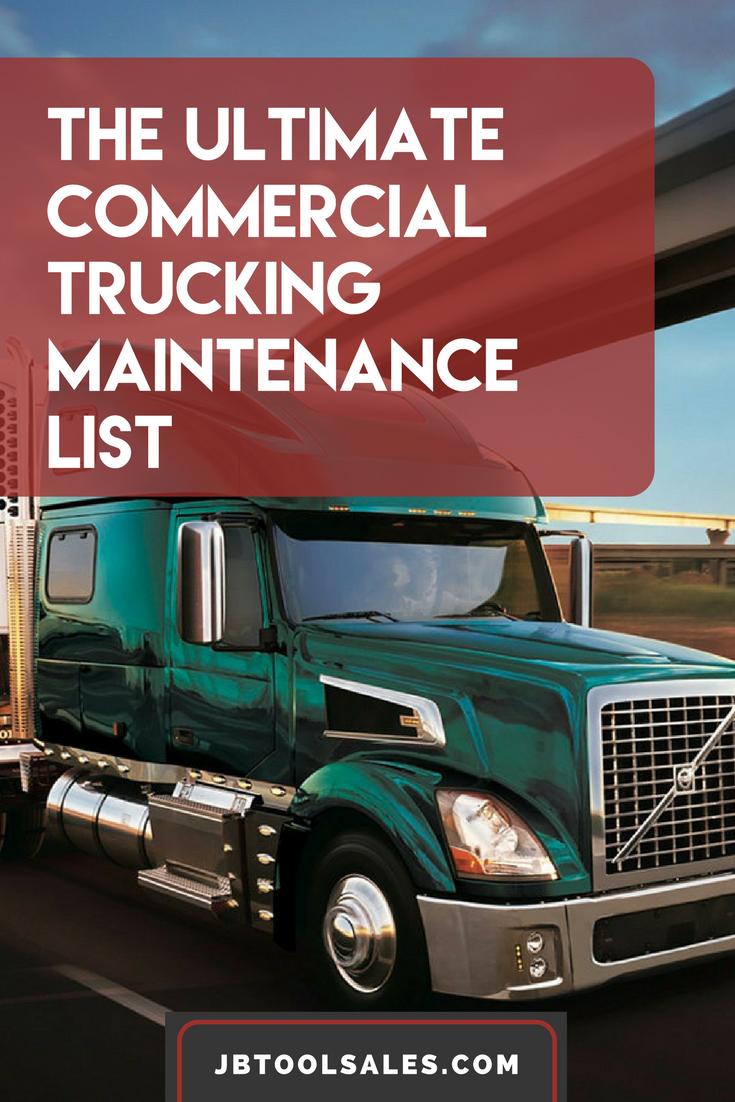The Ultimate Commercial Truck Maintenance Checklist
3rd Feb 2017

The commercial trucking industry is an essential cog in the machine that drives the United States of America. For example, about 8.9 million people have truck-related jobs; it is estimated that 15.5 million trucks are in operation in the United States on a given day; there are more than 3.5 million truck drivers in the U.S.; commercial trucks traverse as many as 432.9 billion miles a year; and commercial trucks carry almost 70 percent of all freight transported across the United States in one year.
Just as there are different styles of automobiles, there are also different types of trucks including:
- 18-Wheeler Trucks
- Dump Trucks
- Flatbed Trucks
- Garbage Trucks
- Heavy Trucks
- Panel Trucks
- Semi-Trailer Trucks
- Tanker Trucks
According to the United States Department of Transportation, there are more than 500,000 truck accidents a year, which account for 2.4 percent of all vehicle accidents that occur in the country per year. More than 75 percent of truck-related accidents that occur each year are due to the driver of a passenger car and only about 16 percent are found to be the fault of the truck driver.
Still, the condition of the truck itself is an essential reason why truck accidents occur. That is why it is imperative that truck company fleets or driver-owned commercial trucks be properly maintained. This is commonly achieved with a commercial truck maintenance checklist.
The Federal Motor Carrier Safety Administration (FMCSA), the federal agency within the U.S. Department of Transportation that oversees commercial truck operations in the United States, has created its own commercial truck maintenance checklist for pre-trip inspection of commercial motor vehicles. It suggests what the truck driver should inspect before taking the vehicle on the road. The agency’s commercial truck maintenance checklist pre-trip check includes:
- The tires. According to the agency, the tires account for about one-third of the total maintenance costs of the vehicle. It advises inspection of tire air pressure and tread.
- The fluids. Drivers are encouraged to look for fluid leakage on pavement under the truck, check the coolant, antifreeze, oil and fuel for leaks and whether there is the proper amount of fluid under the hood. The driver is also urged to turn on the ignition and examine the oil pressure, temperature and air pressure gauges to assure they are working properly.
- Electrical system and wiring. All lights including headlights, warning lights, flashers, clearance lights, turn signals, brake lights and other electrical components should be reviewed as well as wires to assure that everything is working properly and that the wires are not worn or loose.
- Brakes. The parking and standard brakes should be checked to assure that there is a proper amount of lining remaining, that there are no leaks in the air pressure system, that the low pressure warning alarm works properly, that parking brakes turn on automatically and to assure the proper rate of air pressure build-up.

Preventive Maintenance Program
Things that are scheduled usually take place. That is probably why most people involved in fleet maintenance prefer scheduling maintenance activity.
Of course, the need for scheduled preventive maintenance is to prevent breakdowns from occurring, minimizing down time to make repairs, and assuring that the vehicle is operating safely.
A total maintenance program must be proactive and reactive. The idea is to minimize problems before they occur. However, there will be times when unscheduled repairs may be necessary.
An effective preventive maintenance program must include checklists that identify what is to be serviced and how frequently that service should be performed. The condition of the vehicle is the responsibility of the driver of the vehicle. So it is up to him or her to perform inspections, provide details of the inspection in writing and to notify appropriate people as to problems with the vehicle. Companies that rely on a fleet of commercial trucks should include a facility where a vehicle can be fixed or maintained that is staffed with professional automobile mechanics or technicians. The management of the facility can be performed by an in-house staff or outsourced.
Details of scheduled preventive maintenance should be documented and the documentation should be kept. Such documentation is usually achieved with the use of a preventive maintenance service checklist. The checklist should include a list of items on the vehicle to be inspected and should provide space to indicate the result of the inspection.
A scheduled preventive truck maintenance checklist should address:
- Engine oil and filter changes
- Transmission fluid
- Fuel system
- Cooling system
- Engine and transmission mounts
- Drive shafts or CV joints
- Belts and hoses
- Tune-ups
- Electrical system components
- Braking system
- Steering and suspension system
- Tires
- Wheels and rims
- Exhaust system
- Undercarriage and frame
- Exterior and interior lights
- Body, glass and mirrors
- Windshield wiper system
- Horn
- Seat belts and seat structure
- Fluid leaks
- Auxiliary systems
Time between servicing and inspection should be included in the truck maintenance checklist. Refer to the vehicle owner’s manual for the manufacturer’s recommendations for intervals between service and inspection.
The fleet manager or truck driver should be personally responsible for the preventive maintenance scheduling. There is also preventive maintenance software available that can perform this task.
Maintenance by Mileage – 10,000 Mile Interval Vehicle Maintenance Schedule
For Light-Medium Duty Trucks:
| Mileage | Change oil and oil filter | Lubricate chassis, steering, suspension and driveline | Check belts, hoses and fill fluid levels | Drain fuel filter/water separator | Rotate Tires and adjust air pressure |
Check
brakes |
Replace
External fuel filters |
| 10,000 | X | X | X | X | X | X | |
| 20,000 | X | X | X | X | X | X | X |
| 30,000 | X | X | X | X | X | X | |
| 40,000 | X | X | X | X | X | X | X |
| 50,000 | X | X | X | X | X | X | |
| 60,000 | X | X | X | X | X | X | X |
| 70,000 | X | X | X | X | X | X | |
| 80,000 | X | X | X | X | X | X | X |
| 90,000 | X | X | X | X | X | X | |
| 100,000 | X | X | X | X | X | X | X |
| 110,000 | X | X | X | X | X | X | |
| 120,000 | X | X | X | X | X | X | X |
| 130,000 | X | X | X | X | X | X | |
| 140,000 | X | X | X | X | X | X | X |
| 150,000 | X | X | X | X | X | X | |
| 160,000 | X | X | X | X | X | X | X |
| 170,000 | X | X | X | X | X | X | |
| 180,000 | X | X | X | X | X | X | X |
| 190,000 | X | X | X | X | X | X | |
| 200,000 | X | X | X | X | X | X | X |
| Mileage |
Inspect engine air filter
restriction gauge and replace filter |
Replace
Cabin air filter |
Replace front and rear differential fluid | Replace transfer case fluid |
Transmission
service |
Coolant
replacement |
| 10,000 | ||||||
| 20,000 | ||||||
| 30,000 | X | X | ||||
| 40,000 | ||||||
| 50,000 | ||||||
| 60,000 | X | X | X | X | X | X |
| 70,000 | ||||||
| 80,000 | ||||||
| 90,000 | X | X | ||||
| 100,000 | ||||||
| 120,000 | X | X | X | X | X | X |
| 130,000 | ||||||
| 140,000 | ||||||
| 150,000 | X | X | ||||
| 160,000 | ||||||
| 170,000 | ||||||
| 180,000 | X | X | X | X | X | X |
| 190,000 | ||||||
| 200,000 | ||||||
Source: State of Utah Department of Administrative Services – Division of Fleet Operation

Seasonal Maintenance
Seasonal, especially summer and winter maintenance should also be considered when performing preventive maintenance.
The summer months, when the climate is hot and dry, and the winter months, when it is cold, icy and snowing, offer particular problems for commercial truck maintenance issues as well.
During the summer maintenance should concentrate on the cooling system. Focus should be on the following:
- Inspect the radiator for corrosion and determine that the coolant is clean. Coolant should be drained and flushed a minimum of once a year.
- Inspect the radiator cap for damage and replace it whenever the coolant is drained and flushed.
- Do a coolant system pressure test. Such an exam should be done a minimum of once a year.
- Inspect air conditioner cooling coils for damage and debris buildup. Clean when necessary.
- Inspect radiator and heater core hoses and lines for damage, leaks, mushiness and hardness. Make certain that connections are tight. Replace hoses every two years.
- Exam belts for wear and tear as well as tension and test the tensioner arm to assure it works properly. Replace belts every one to two years.
- Exam the water pump for leaks and check to assure that the engine preserves a temperature within manufacturer’s recommendations.
- Run the heater to assure that it functions properly.
You should also pay more attention to the engine coolant and tire air pressure during the summer months. Keep in mind that air rises and expands when it is hot, causing higher air pressure in the neighborhood of an additional 10 to 15 psi. This is usually accepted in radial truck tires. Always check pressure when the tire is cold. Pressure should be checked at least once a week.
In addition, inspect the vehicle’s electrical system including:
- Alternator wiring to see if they are loose and contacting fuel lines or any rough parts.
- The battery to be certain it is properly and securely mounted.
- The battery cables to see if they are connected properly and fastened securely.
- Look for corrosion at the battery terminals and clean if necessary.
- The condition of wires.
You should also take extra precautions during the winter. Concentrate on parts of the vehicle that can be affected by extremely cold weather, snow, and ice. Inspections should include:
- Diesel engines that use urea-based diesel exhaust fluid (DEF) in the emission control system. The fluid freezes at temperatures of 12° F (-11° C), but thaws under normal operation within 45 minutes.
- Engine heaters. Although it is true that most medium-duty trucks feature block heaters to keep engine oil warm, some newer commercial trucks use oil-pan heaters.
- The coolant to assure proper level. Coolant older than 24 months should be flushed out and replaced.
- Fuel for diesel engine. In areas where temperatures can drop below 10° F (-12° C) it is important that the diesel fuel is ASTM D-975 Grade 1, which can withstand the cold.
- Glow plug operation.
- Servicing the fuel filter and draining the water separator to prevent freezing.
- The battery. The battery should be tested and connections cleaned.
- Windshield. The windshield should be checked for chips and pitting because as temperatures get colder, sheet metal contracts causing windshields to break due to stress. Small chips should be fixed to avoid extension of cracks.
- Windshield wiper blades. They should be replaced if damaged.
- Windshield washer reservoirs. Regularly check to see that there are proper winter dilution levels.
- Heater and defroster operation. Check the function and position of the directional vanes of the heater/defroster to assure effective defrosting.
- Tires. Inspect the condition of the tires to assure that the tread is thicker than 5/32-inch for winter driving and that tires are correctly inflated. Use tire chains when driving in icy conditions.
- The exhaust system for leaks.
- Anti-braking system. Check ABS operation at the start of winter and monitor stroke adjustment of drum brakes, fluid levels and parking brake performance.
- The cab, body and undercarriage. Clean the truck weekly to remove road salt.
- Radiator. Make certain that the front surface of the radiator is clean.
- Heated mirrors. Assure that the mirrors operate properly.
- Belts and hoses. Check all belts and hoses and replace when necessary.
- Emergency kit. Make sure that the kit includes road flares, fire extinguisher, reflective triangles, first aid kit, water, solar blanket, jumper cables and anything else you may need to survive through extreme weather overnight.
It is essential for a company that relies on a fleet of commercial trucks or a single driver, who owns a truck, take steps to create and use a truck maintenance checklist and follow a preventive maintenance schedule to control the costs of owning a truck and to ensure that the truck performs safely under all conditions.


